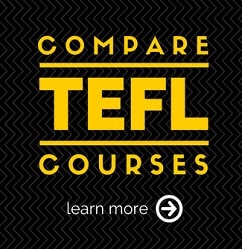Let me share my secrets on how to write a killer lesson plan that works every time - GANAG.
Those of us, who are new teachers, don’t have the luxury of reams of previous lesson plans, worksheets and activities, which proved to be effective.
True, we can call on colleagues and friends to help us. Most of the time, however, we must start from scratch. With so much to do, it can sometimes be difficult to hit the mark.
Introducing GANAG
During my first placement, my mentor teacher introduced me to GANAG. This lesson schema is one I swear by, and I haven’t looked back since.
Developed by Dr Jane Pollock, many schools are beginning to adopt the lesson practices she outlines. Other schools simply adapt certain concepts to fit their curriculum. Either way, it’s becoming quite a big thing, and to jump on board the bandwagon now would be a stellar idea.
GANAG separates the lesson into easily negotiable segments. I’ve seen lesson plans that were ideas, projectile vomited onto a page. A friend of mine even drew an image of the class, and called it a lesson plan!
In short, there are so many ways to develop your lesson. However, there are only a few ways to construct the best lesson plan. GANAG is one of them.
A GANAG lesson plan is divided into two sections: what the teacher is doing, and what the students are doing. This way, the teacher has a clear idea of how the lesson is meant to look when put into practice.
Try a GANAG lesson plan when teaching in China.
G is for goal
The first objective is the goal(s). This is to be written on the board. This makes teachers accountable.
Additionally, students immediately know what they will be doing. They begin to see how everything they will do in the lesson is connected. As the goals are crossed off the board, students understand what they have learned.
A is for access to prior knowledge
The next step is access to prior knowledge. This may include analyzing what was undertaken in the previous lesson, or analyzing information students may have learned a year prior.
This could sometimes be a brief discussion between teacher and students. The teacher may ask questions, which students respond to. Students may also be required to look through their previous work to find the answer.
Students generally learn best when they have an opportunity to use prior learning, and this part of the lesson allows teachers to analyse how much students know.
N is for new information
Following on from this, is the new information. This stage is often very teacher-centered. This could be done through ‘chalk and talk’, a PowerPoint or through Prezi.
Alternatively, students could read aloud from a textbook or worksheet, with guided questions and contextualization from the teacher.
A is for application of new and prior information
The penultimate stage is application of new and prior information. More often than not, this is a student-oriented activity. This is where students use their prior knowledge to understand the new content.
Perhaps students work on their own, then consult later with a partner. Maybe students work in groups to answer a set of questions, before reporting back to the class.
G is for goal review
Lastly, is the goal review. This is where the teacher discovers if the lesson has been successful. During this stage, students reflect on their learning, writing down two or more things they learned.
Occasionally, students are quite dumbfounded when asked, ‘What did you learn in class today?’ By writing a reflection, however, students will have access to two snappy sentences that highlight what happened.
At the end of the GANAG lesson plan is a separate section for indicating the focus of the following class. In outlining this, a clear link from one lesson to the next becomes evident.
The teacher will often instruct students on what will be happening when they next meet during the goal review stage. Moreover, any homework is often assigned at this stage.
In summary, this step-by-step procedure helps teachers develop an accurate plan of their lessons. The ability to also document student actions assists teachers in understanding how students learn, which is paramount in teaching.
GANAG lesson template
Here's my template to help you create the best lesson plans for your class in China (or anywhere for that matter).
Lesson title: (Class, date)
Unit: (Subject title)
Standards: (What is the curriculum you are using)
Formative/Summative assessments in lesson: (Will there be assessment tasks completed in the lesson? Will assessment tasks be given as homework?)
Resources and materials: (Worksheets, presentations, etc)
| TEACHER ACTIONS (include time) | STUDENT ACTIONS (include time) |
|
Goal(s): (Write goals on the board) |
How will students know what they have to learn? (Students will read through goals with the teacher) |
|
What access to prior knowledge will students have: (Is there a lesson the teacher previously hosted that is relevant here?) |
How will students know prior knowledge? (Class recap, discussion in groups, etc) |
|
New information: (Teacher centered) |
How will students learn the new information? (Reading, copying, listening, etc) |
|
Application of new and prior information: (Teacher assigns the activity, monitors student progress) |
How will students know they have learnt, or are developing, their learning and new information? (Students undertaking activities) |
|
Goal review: (Ask students to reflect. Provide homework to students. Notify the class what will happen in the next lesson) |
How will students reveal what they have learned? (Students reflect on their learning. Students write down any homework tasks they need to complete) |
If you use GANAG lesson plans in China, let us know how you go!






